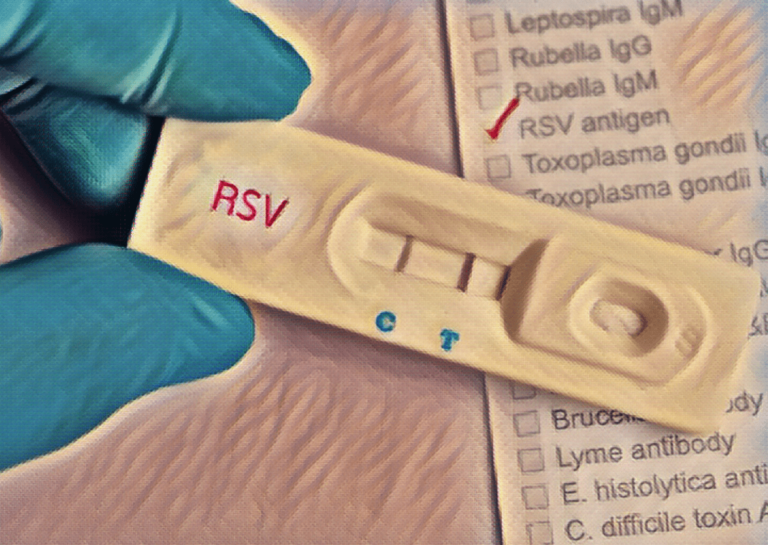In recent news, hospitals are dealing with a surge in patients under the age of five who are being admitted with a virus that is the leading cause of bronchitis in younger children. In this article, we will discuss the rise in Respiratory Syncytial Virus cases among children, the signs and symptoms to look for, and how parents can help keep their children healthy.
Respiratory Syncytial Virus is the main cause of bronchitis in younger children and can be severe in some cases. Public Health England issued a new alert on Friday to parents on RSV, a potentially fatal respiratory infection that can particularly affect children under the age of two.
UK Health Security Agency chief executive Dr. Jenny Harries said her team was also particularly worried about flu and respiratory syncytial virus (RSV) this winter. RSV season typically begins in the fall and early winter. This is the germ that normally, along with flu, fills every children’s hospital each fall and winter.
“During the last year there has been a remarkable reduction in respiratory viral infections other than Covid-19. This means that there is an increasing number of young children who have never been exposed to these common viruses.”
Dr. Jenny Harries
Susannah Hills, a pediatric airway specialist at Columbia University Medical Center, treated a child with RSV+COVID-19. This was the first time she’d seen this combination of Covid-19 and respiratory syncytial virus — one of the most prevalent pathogens that can damage the airway and lungs in young children. This year, RSV is peaking early, and data from the US Centers for Disease Control and Prevention has been showing a rise in cases across the country since June.
According to research, RSV is the most common cause of lower respiratory tract infection (LRTI) in children <1 year of age. Most cases of RSV or bronchiolitis are mild and can be managed at home, but about 3% of cases will need hospital care. RSV can be more severe in premature babies, those under two months old, and children with certain underlying conditions, such as those born with a heart condition.
Parents are being encouraged to look out for symptoms of severe respiratory infection in at-risk children. The symptoms of RSV that parents should look for include: a high temperature of 100.4°F or above, a dry and persistent cough, difficulty feeding, and rapid or noisy breathing. Parents of young children under 1-year-old, along with adults over 65 or those with chronic illnesses, should monitor for more severe symptoms like trouble breathing or eating.
According to pediatrician Dr. Elizabeth Murray, “the good news for parents is that the concerning symptoms are not subtle. If your child cannot eat or drink normally or is having trouble breathing, they need to be evaluated by a medical professional.” But with newborn infants, could have no symptoms then become incredibly ill, so parents should be extra cautious taking them out if RSV is spreading in their area.
“It’s yet another reminder to limit visitors when you have a newborn to hopefully decrease the likelihood of passing RSV or another germ onto a baby,” Dr. Murray said.
Due to this increased activity, the CDC encourages broader testing for RSV among patients presenting with acute respiratory illness who test negative for COVID-19. They also advised healthcare workers to stay home if they’re feeling sick, even if they’ve tested negative for COVID-19. The best forms of prevention for RSV are similar to the recommendations for COVID-19 — wash hands regularly, avoid touching unnecessary surfaces and stay home if you’re sick.
The pandemic has changed many things about our lives, but the road to good health is still paved with plenty of fruits and veggies, deep breaths, good friends, and a good night’s sleep.
References
Piedra, P. A., & Stark, A. R. (2021, July). Patient education: Bronchiolitis (and RSV) in infants and children (Beyond the Basics). Uptodate.
Hall CB, Weinberg GA, Iwane MK, et al. The burden of respiratory syncytial virus infection in young children. N Engl J Med 2009; 360:588.
Ralston SL, Lieberthal AS, Meissner HC, et al. Clinical practice guideline: the diagnosis, management, and prevention of bronchiolitis. Pediatrics 2014; 134:e1474.
Merrick, J. (2021, July 23). Health Chiefs preparing for triple threat from Covid, flu and RSV in worst case Scenario winter. inews.co.uk. https://inews.co.uk/news/politics/health-chiefs-preparing-for-triple-threat-from-covid-flu-and-rsv-virus-in-worst-case-scenario-winter-1117986.
Mazziotta, J. (2021, August 25). Rare summertime cases of rsv are spiking again in these 6 states. PEOPLE.com. https://people.com/health/rare-summertime-cases-of-rsv-are-spiking-again-in-these-6-states/.
MediLexicon International. (n.d.). Have COVID-19 LOCKDOWNS affected our immune systems? Medical News Today. https://www.medicalnewstoday.com/articles/how-have-pandemic-lockdowns-affected-the-immune-system.
The National Respiratory and Enteric Virus Surveillance System (NREVSS). (2021, August 25). RSV National Trends – NREVSS. Centers for Disease Control and Prevention. https://www.cdc.gov/surveillance/nrevss/rsv/natl-trend.html.

